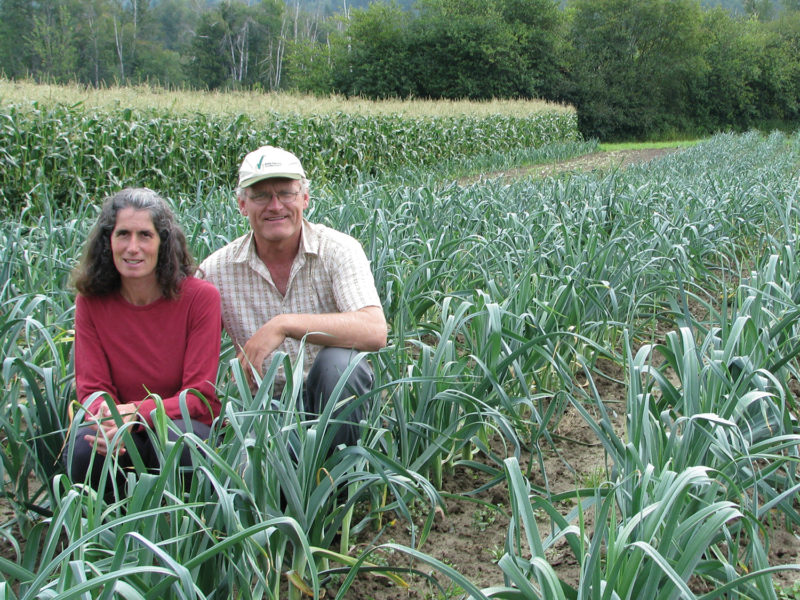MARA – It’s a feat to grow outstanding vegetables, but without proper storage all that goodness can be lost.
In 28 years of farming, Hermann Bruns and wife Louise, owners of Mara-based Wild Flight Farm, have learned a thing or two about how to keep produce in the kind of condition that delivers profits to them and pleasure to customers.
Kootenay & Boundary Farm Advisors hosted a virtual farm tour on December 8 where Bruns outlined his five distinct storage areas and how they keep vegetables at their best. The organic farm grows a wide range of field vegetables on about 12 acres each year including potatoes, cabbage, squashes, onions, garlic and carrots. Wild Flight sells through farmers markets and a few wholesale customers.
“Each [vegetable] group has their own requirements for storage temperature and humidity,” he explains.
The building was custom built in 2001 and expanded in 2012. The walls, ceiling and concrete floors are insulated according to the needs of each of the five coolers. The facility wasn’t cheap, but it was the most efficient route for the variety of crops Bruns stores.
The first cooler is for squash, which are kept stem up on wooden shelves. The shelves are built four-high on top of pallets, which can be easily moved with a pallet jack. A thermostat at the far end of the room connects to a fan that blows outside air in, keeping the temperature between seven and 10° C. A ceiling fan promotes air circulation.
“They want it dry,” says Bruns. “One way to keep it dry is to keep the air moving all the time.”
Squash can be problematic and Bruns says even when everything is done correctly, they may not store well. He feels the region’s cooler temperatures prevent the squash from fully ripening.
Squash, other than acorn or pumpkins, are left to cure at 30° C for a week before entering storage. This allows them to keep until February or March. Pumpkins and acorn squash don’t keep past December.
“We throw out way too many squash in my opinion,” he says. “There’s lots of room for improvement on the squash storage front.”
The second cooler is the main vegetable storage. Bruns keeps his cabbage here in unlined apple bins with plastic on top. Bagged carrots and parsnips are also kept in apple bins as are loose beets with a plastic liner. Temperatures are kept as close to zero as possible with active refrigeration, which is monitored using a small dish of water. A skim of ice is good, solid ice means it’s too cold.
The plastic liners and bags help to manage humidity and prevent drying out.
“We don’t add moisture. On a small scale, it’s a little too complicated to do that,” he says. “There are definitely larger-scale coolers that do that.”
The third cooler is designated for apples and pears brought in from other farms. While these also like to be kept close to zero degrees and have active refrigeration, the fruits emit ethylene that impacts the flavour and storage quality of vegetables, so they get their own cooler.
“We don’t want to have the apples together with the carrots, for example, because ethylene makes the carrots taste bitter,” he says. “If the carrots are sprouting, it’s not cold enough.”
The fourth cooler is kept at about 5° C using outdoor air. Bruns stores his potatoes here in sacks. They’re unwashed until it’s time to sell them, to keep the humidity low and prevent disease.
Keeping potatoes too cool will cause them to convert their starches into sugars, impacting flavour and texture.
The fifth cooler is for onions and garlic and ranges from zero to 15° C with constant air movement to keep the produce dry. Bruns allows this room to get warmer because the demand for onions and garlic exceeds his supply so long-term storage isn’t the goal.
“They like to be close to zero as well, but what’s really important to them is that they are dry,” he says.
All coolers are checked daily to ensure temperature, humidity and air flow are in the right ranges.
Other elements that are important to consider when building a vegetable storage facility include smooth concrete so bins on rollers can be moved easily, a capacity greater than currently needed (and enough room to move around), coolers that maintain an even temperature, six-foot door frames for ease of movement and establishment of efficient flow of product and workers.
“You really want to pay attention to things and how much you need to move them around,” he says. “You really want to reduce the amount of times you have to lift and move a box of produce.”


 Premises ID to be mandatory
Premises ID to be mandatory